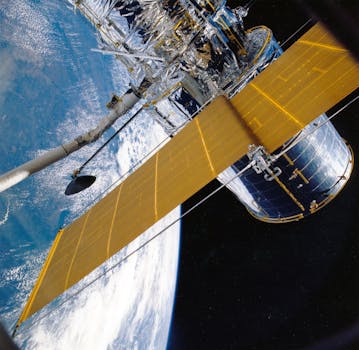From Geostationary to Low Earth Orbit: The Evolution of Satellite Telecommunications in 2023
The satellite telecommunications industry has undergone significant changes in recent years, with a shift from geostationary to low Earth orbit (LEO) satellites. This article explores the evolution of satellite telecommunications in 2023, including the benefits and challenges of LEO satellites, and the impact on the industry.

From Geostationary to Low Earth Orbit: The Evolution of Satellite Telecommunications in 2023
Satellite telecommunications have come a long way since the launch of the first commercial communications satellite, Intelsat 1, in 1965. For decades, geostationary satellites have been the backbone of the industry, providing a wide range of services including television broadcasting, telecommunications, and navigation. However, in recent years, there has been a significant shift towards low Earth orbit (LEO) satellites, which are revolutionizing the way we communicate and access information.
Focus Keyword: Satellite Telecommunications. The benefits of LEO satellites are numerous. They offer lower latency, higher bandwidth, and greater flexibility than traditional geostationary satellites. LEO satellites are also less expensive to launch and operate, making them an attractive option for new entrants in the market. Additionally, LEO satellites can provide higher resolution imagery and more accurate data collection, making them ideal for applications such as Earth observation and remote sensing.
The Rise of LEO Satellites
One of the key drivers of the shift towards LEO satellites is the growing demand for high-speed, low-latency connectivity. As more people and devices become connected to the internet, the need for fast and reliable communication services has increased exponentially. LEO satellites are well-suited to meet this demand, as they can provide speeds of up to 1 Gbps and latency as low as 20 ms. Companies such as SpaceX, OneWeb, and Amazon’s Kuiper Systems are leading the charge in the development of LEO satellite constellations, with plans to launch thousands of satellites in the coming years.
Challenges and Opportunities
While LEO satellites offer many benefits, they also present several challenges. One of the main concerns is the risk of collisions and debris in Earth’s orbit. As the number of satellites in LEO increases, so does the risk of accidents and the potential for damage to other spacecraft. To mitigate this risk, companies are developing new technologies and protocols for collision avoidance and debris removal. Another challenge is the need for interoperability between different satellite systems and ground infrastructure. As the industry continues to evolve, it is essential to develop common standards and protocols to ensure seamless communication and data exchange between different systems.
Impact on the Industry
The shift towards LEO satellites is having a significant impact on the satellite telecommunications industry. Traditional geostationary satellite operators are facing increased competition from new entrants, and are being forced to adapt their business models to remain competitive. The rise of LEO satellites is also creating new opportunities for innovation and investment, as companies develop new technologies and applications to take advantage of the benefits of LEO satellites. As the industry continues to evolve, it is likely that we will see significant changes in the way we communicate and access information, and that LEO satellites will play a major role in shaping the future of satellite telecommunications.


